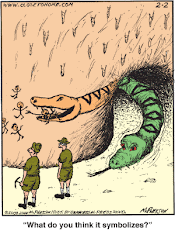The Miami Herald
Last week, Soledad O'Brien made a young mother cry.
It came in the midst of a special series, "Black Or White: Kids on Race" on CNN's Anderson Cooper 360. The series was based on a new version of the famous "doll tests" pioneered by husband and wife psychologists Kenneth and Mamie Clark in the 1930s and '40s, and recreated in 2005 by Kiri Davis, a teenage filmmaker.
In the tests administered by the Clarks and Davis, black children were presented two dolls, identical in appearance except that one was dark and the other, light.
Asked which doll was bad, stupid, or ugly, most of the black kids picked the black doll. Asked which was good, smart, or pretty, they chose the white one.
CNN's study was similar, except that children were presented with pictures, not actual dolls, and the images ran a color gamut from very light to very dark. One other difference: CNN tested white children along with black ones.
Which is how this little five-year-old white girl in Georgia came to be sitting at a table facing an unseen researcher as her mother sat with O'Brien and watched on video. Asked to point out the "good child," she touched one of the lighter skinned figures. Why is that the good child, she was asked. "Because I think she looks like me," the little girl said.
Asked to point out the "bad child," she touched the darkest image on the paper. And why is that the bad child? "Because she's a lot darker," the little girl said.
And watching, her mother softly wept.
Your heart broke for her, because you just knew she never saw that coming. Your heart broke because you just knew she had bought into the myth that children are not soiled by the prejudices that stain their elders.
Your heart broke, because how many times have you heard it said that, since they are growing up in the era of Oprah and Obama, our children will live beyond the belief that character is a function of color.
But children are not idiots. They hear us and see us. They watch television, they listen to radio, they read magazines, they live in our world. So very early on, they know what we think. And often enough, it becomes what they think, too.
Thus, it is no surprise that CNN found both black and white kids maintain a decided bias toward whiteness. For instance, 76 percent of younger white kids pointed to the darker figures when asked to identify "the dumb child." Because this is a pilot study, those results are not definitive. But they are instructive.
So is this: A few months ago, a white teacher brought a black girl up to me as I was preparing to give a speech. The teacher wanted me to talk to her. She doesn't think she is beautiful, said the teacher, because she is dark. I asked the girl if this was true and in a soft voice, with eyes averted, she said that it was.
And man, what do you say to that? How do you explain the psychology of self-loathing and the futility of judging oneself by someone else's beauty standards, and the cumulative psychological weight of 400 years of being told you are not good enough and the need to embrace and love and value yourself just as you are?
How to explain all that in 90 seconds or less while people are pulling at you, and the event is about to begin and you've got a speech to give and this little girl won't even look up?
I did the best I could. It was not nearly good enough.
As I watched her walk away, I was troubled by my failure to make the case. And by the enduring need to do so. We are over 40 years beyond the Civil Rights Movement, 40 years beyond a burst of pride and racial consciousness that transfigured our very understanding of what it means to be black, 40 years into a future where Michael Jordan is an icon, Bill Cosby is a national father figure and a Kenyan's son is president of these United States.
Forty years. And still...
And still.
Read more: http://www.mcclatchydc.com/2010/05/27/94722/commentary-the-doll-tests-and.html#ixzz0p8HeiAYY

No comments:
Post a Comment